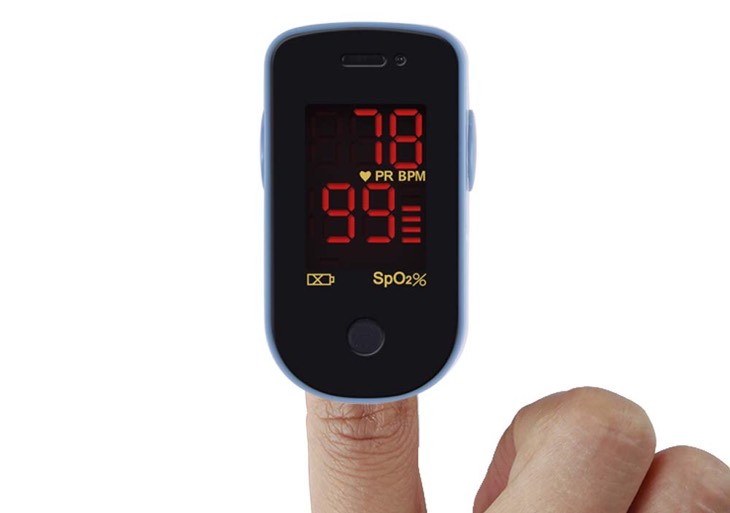Disclaimer: Use your head, listen to your doctor, call 911 if you need help, etc. Medical disclaimer.
About the author: Stephanie Arnold is an advanced practice nurse and educator working in the Los Angeles metro area.
We’ve gotten many questions from worried readers about how to tell the difference between a cold, allergies, flu, and other illnesses that come with coughing (and sometimes fever), and COVID-19. In the present circumstances and in response to pleas from health authorities in many areas to avoid running out to the hospital if you can, many people want to know if it’s possible to tell from home if and when they’re in real trouble and need emergency care.
We are not telling you to stay home if you’re sick — our advice is to contact your doctor. If you’ve been instructed to care for yourself at home, then a great way to get an indication that your problems are more serious than just a bad cold is to keep an eye on your blood oxygen levels.
Low blood oxygen is a sign that something’s wrong with your lungs. A bad viral pneumonia like COVID-19 can cause those levels to drop.
You can track your blood oxygen levels (and your heart rate) with a pulse oximeter of the kind we recommend in the home medical supplies list and in our COVID-19-specific medical kit — it’s easy, painless, and non-invasive, and inexpensive (under $20 for our main pick).
Most of the pulse oximeters available online and over the counter are battery-operated and clamp on a finger.
Here’s how to use one to determine if you should contact a health care provider.
Using a pulse oximeter
Pigments prevent the device’s probe from getting an accurate reading, so fingernail polish, ink, paint, or henna hand treatments should be removed beforehand.
It’s important to be still when the device is taking a reading, as too much movement will interfere.
The readout will tell you your peripheral capillary oxygen saturation (Sp02). A value of 95% and above is considered normal.
An Sp02 of 94% and below indicates a degree of hypoxemia, which is a low oxygen level in the blood. People with chronic vascular, cardiac, or pulmonary conditions (like asthma and COPD) may have a lower than normal Sp02 at baseline.
It’s worth noting that altitude can lower Sp02 readings, as can cold hands. So make sure your extremities are warm if you want an accurate reading, and check this chart showing the effects on Sp02 of healthy patients at different altitudes.
One reading gives a single data point, but it’s also important to monitor the trend over time. A person sick at home with a respiratory illness should call their health care provider if a pulse oximeter consistently shows a lower than normal reading or if the Sp02 level is trending down.
Even without a pulse oximeter reading, a health care provider should be called if a person with flu-like symptoms has fever and shortness of breath.
An Sp02 below 90% indicates significant hypoxemia and requires urgent action, including calling 911 for an ambulance.
Be warned that hypoxemia can develop and worsen quickly, so knowing when to seek care is important. Having an Sp02 reading is both helpful and practical, but it’s important not to delay seeking care if care is still available in your area.


You are reporting the comment """ by on